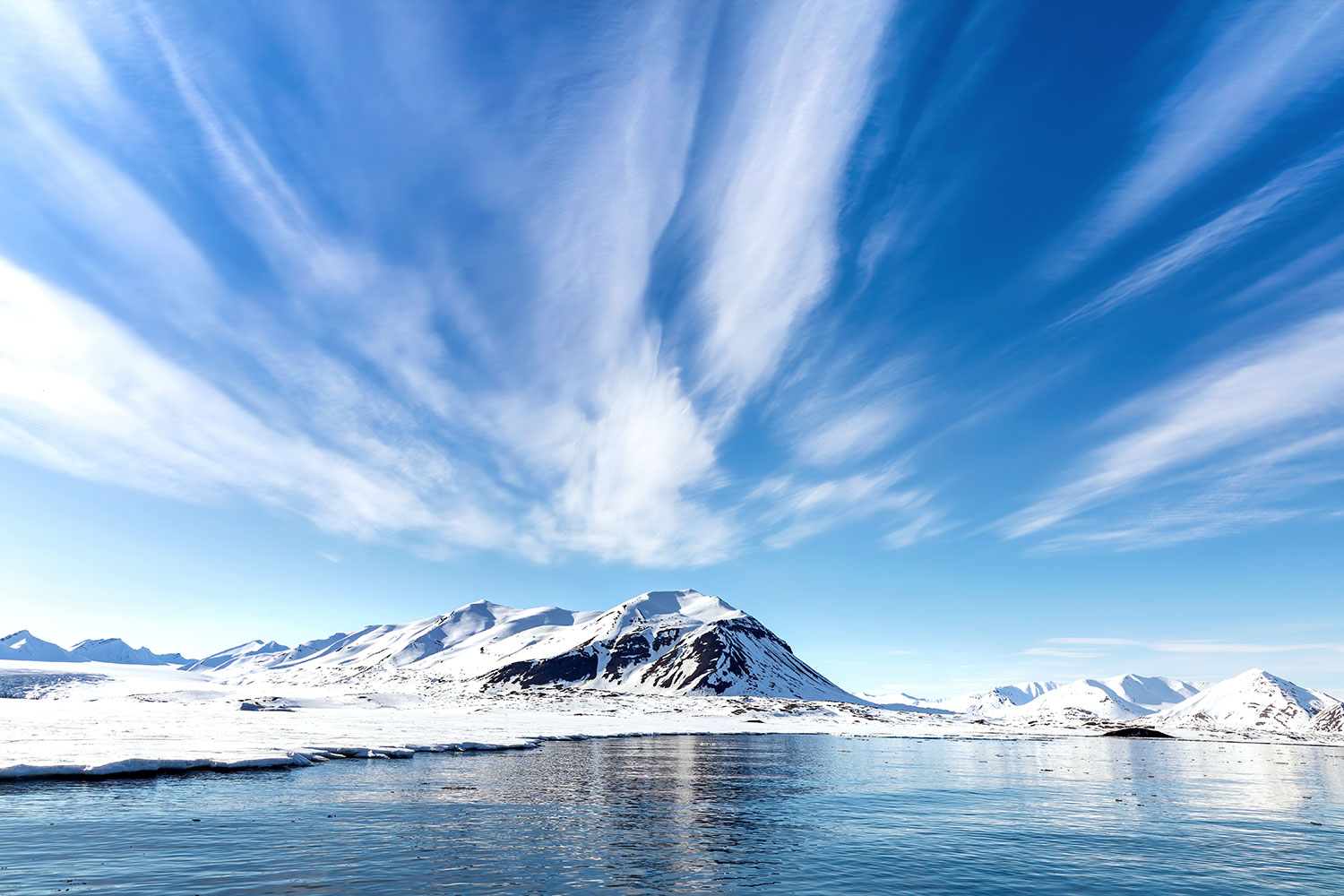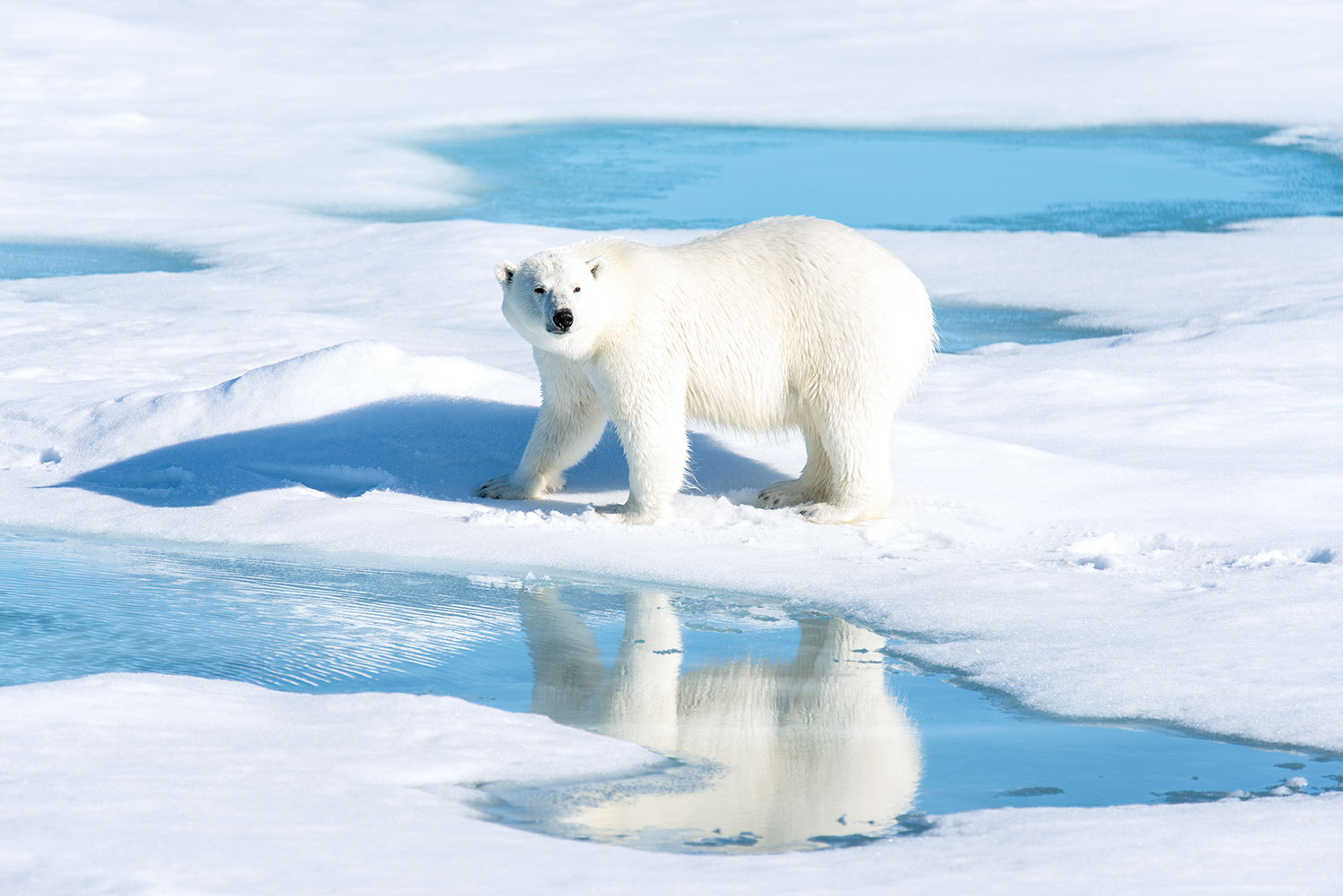Whenever winter comes, people hesitate to go outside because of the biting wind, and prepare winter items for the cold weather. It is easy to see people walk in a hurry, hunching their shoulders, in down jackets or fur coats. Then, how do animals, which have no houses to prevent the wind or thick clothes to wear, endure the severe cold?
The coldest place on the earth is the Antarctic. Only 2% of the surface of the Antarctic exposes the soil, and the rest of it is covered with 2-kilometer [1.24-mile]-thick ice. The average temperature of the Antarctic in winter is -56.7℃ [-70.06℉] and it can go down to -91.2℃ [-132.16℉]. Sometimes, the wind of over 50 m/s [112 mph] blows on the coast. The Antarctic which has barely started to unveil itself as the expedition became successful in the 20th century is an extreme space. However, even in the Antarctic which looks like a white barren continent where nothing can live, many creatures are living there.

The microorganisms of the Antarctic endure the cold through a chemical method; they produce anti-freezing materials that interrupt the growth of ice crystals by combining with water molecules.
Icefish that live in the Southern Ocean around Antarctica are colorless just like their name. It is because they have blood that lacks hemoglobin. In its body, glycerin is synthesized; glycerin is a kind of liquid that is added to lower the freezing point of the anti-freezing liquid. Just like the microorganisms, many fishes in the Antarctic overcome the cold, using the anti-freezing materials.
The Antarctic is a living site for various kinds of creatures including microorganisms that are hardly visible, penguins, whales, and seals. Among them, emperor penguins, the gentlemen of the Antarctic, cannot be excluded. Emperor penguins, whose waddling and tailcoat-looking fur look adorable, are in fact facing the extreme cold with their whole bodies in the Antarctic. Among the penguins living in the Antarctic, emperor penguins are the only penguins that lay eggs and take care of the young in midwinter. The place where emperor penguins live is extremely cold that even their enemies cannot dare live there, so they can take care of their young safely.
Emperor penguins have various ways to overcome the extreme climate of the Antarctic. When you see a penguin jumping out of the sea onto the ice, it looks soaking wet, but the inside of the fur is not wet at all. It is thanks to the water-proof fur that they have. The thin downy hair that grows on the innermost part of the fur forms a layer of air, which blocks heat emission with its low heat conductivity and keeps the body warm, and the thickest integument which is a layer of fat helps keep the body temperature just like a thick coat.

Then what about the body part that is not covered with fur? The soles of their feet which come into contact with the ice are made of capillary vessels called “wonder net” which prevent frostbites. Thanks to the wonder net, the cold blood near the feet which touch the ice is warmed up by the warm blood that came from the heart and enters the heart, and the warm blood that comes from the heart cools down and then flows into the feet. According to the report, the feet of the arctic foxes and dogs have a similar structure.
Penguins’ funny waddling, which is what penguins are known for, also has a very scientific way to overcome the cold. When walking, penguins’ bodies tilt to the right and to the left and temporarily pause. This kind of way of walking has an effect of saving 80% of energy, and it helps them go through the winter when there isn’t much to eat.
However, it is still not easy to cope with the extreme cold of the Antarctic although they have a unique way of being prepared for winter. So whenever a biting wind blows, they get together densely and share each other’s body temperature. As if flour dough stretches, the penguins rotate like waves every 30 to 60 seconds so that the penguins on the outer layer can go inside little by little. As the penguins move their positions to the outside from the inside and vice versa, the whole group shares the warm body temperature. This is called “huddling.” When hundreds or thousands of penguins huddle together, they present a grand view.
Unlike the Antarctic, the Arctic consists of a vast ocean surrounded by continents and also by icebergs floating in the ocean. On the Arctic which is on the opposite side of the Antarctic, there are animals coping with the cold just like in the Antarctic. One typical example is arctic fox. Many animals that cope with the cold minimize the surface of their bodies to lose less heat. That is why many animals that live in the Antarctic and the Arctic are round and have much fat and small feet. The arctic foxes also have big bodies and small ears and stumpy legs and tails, which help them preserve body heat.
Harp seals that swim in the cold Arctic Ocean are strong in the cold because they have a thick layer of fat under the smooth epidermis just like penguins. However, their eyes which don’t have fur and the layer of fat are exposed defenselessly when entering the sea water. So, they protect their eyes with “membrane” which is a clear layer covering the cornea.
Polar bears which come to our minds first when we think of the Arctic have black skin unlike their white appearance. The black skin absorbs the light which helps keep their body temperature in the cold weather. Strictly speaking, the polar bears’ fur which looks as white as snow is not white. Their fur looks white because its structure is similar to an empty half transparent plastic tube and it reflects most light. The reason the fur of some polar bears in the zoo looks green is that it has green algae stuck in the empty space of the fur. As the empty space of the fur is filled with air, it enhances the effect of insulation. Moreover, polar bears have two layers of fur; short fur that is densely grown, and long fur that is water-proof. This is why polar bears can swim with no problems in the icy cold sea.

Just like penguins and polar bears, many animals have fur that is suitable to overcome the cold. We don’t even have to go far like the Antarctic or the Arctic. Even around us, it is easy to meet animals that have fur to cope with the cold. They are usually lambs or alpacas that inhabit in the alpine region where there is a big diurnal temperature range; as their fur consists of protein called keratin, it is flexible and curly. It is because of the unique structure of keratin whose molecule chains are twisted in the spiral shape. This structure adds solidity to the fur. It doesn’t get damaged or cut even after it is folded up to 30,000 times, and it is strong enough to be expanded 1/3 time of its length without any change in the structure.
Most people think that thick fur would be warmer, but actually the thinner the fur is the warmer it is. It is because if the fur is thinner, the layer of air between the fur is thicker. That’s exactly what duck fur or goose fur, which is the filling for winter jackets, is like. The birds’ feathers have a detailed structure where barbs are attached to a shaft, which allows much air in between. That’s how birds can survive the cold winter. Various artificial fibers have been invented, but people still look for natural materials like the feathers whenever the cold winter comes. It is because the natural materials are a lot warmer than the artificial ones.
The polar regions of the earth! Even in those regions where there is only a cold and fierce wind, life still exists. The animals in the Polar Regions endure the extreme cold with their own ways and sustain their lives. How were the body structures and survival methods given to those animals that endure the harsh winter?
- Reference
- K. Madefessel-Herrmann and other, Chemie Rund um die Uhr, Wiley-VCH; Auflage: 1, 2004
- Lee Seong-gyu, How Animals Cope with Piercing Cold (in Korean, 동물들이 ‘칼추위’ 견디는 비결), Science Times, Jan. 11, 2012
- Lee Yeong-wan, How Do Penguins Endure the Cold? (in Korean, 펭귄은 어떻게 추위를 견딜까), Joseon Ilbo, Dec. 10, 2012
- Choi Jong-uk, How Come Penguins Don¡¯t Freeze in the Antarctic? (in Korean, 펭귄이 남극에서 얼지 않는 이유는?), KISTI Science Fragrance, Aug. 17, 2007
- Kim Ung-seo, How Bears Survive in Arctic (in Korean, 곰이 북극에서 살아남는 비법), KISTI Science Fragrance, Nov. 20, 2013